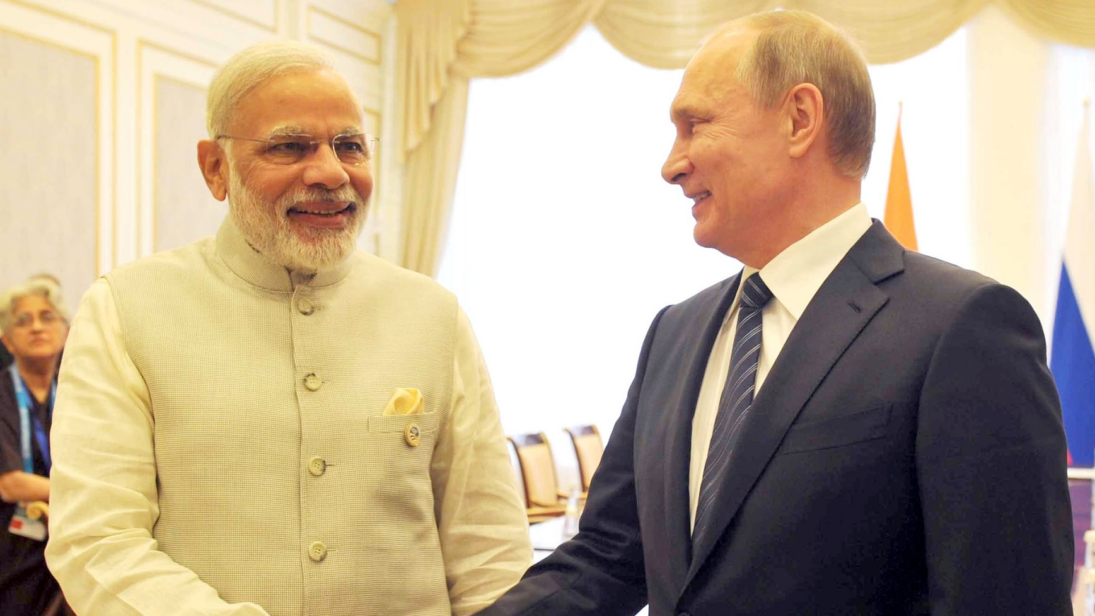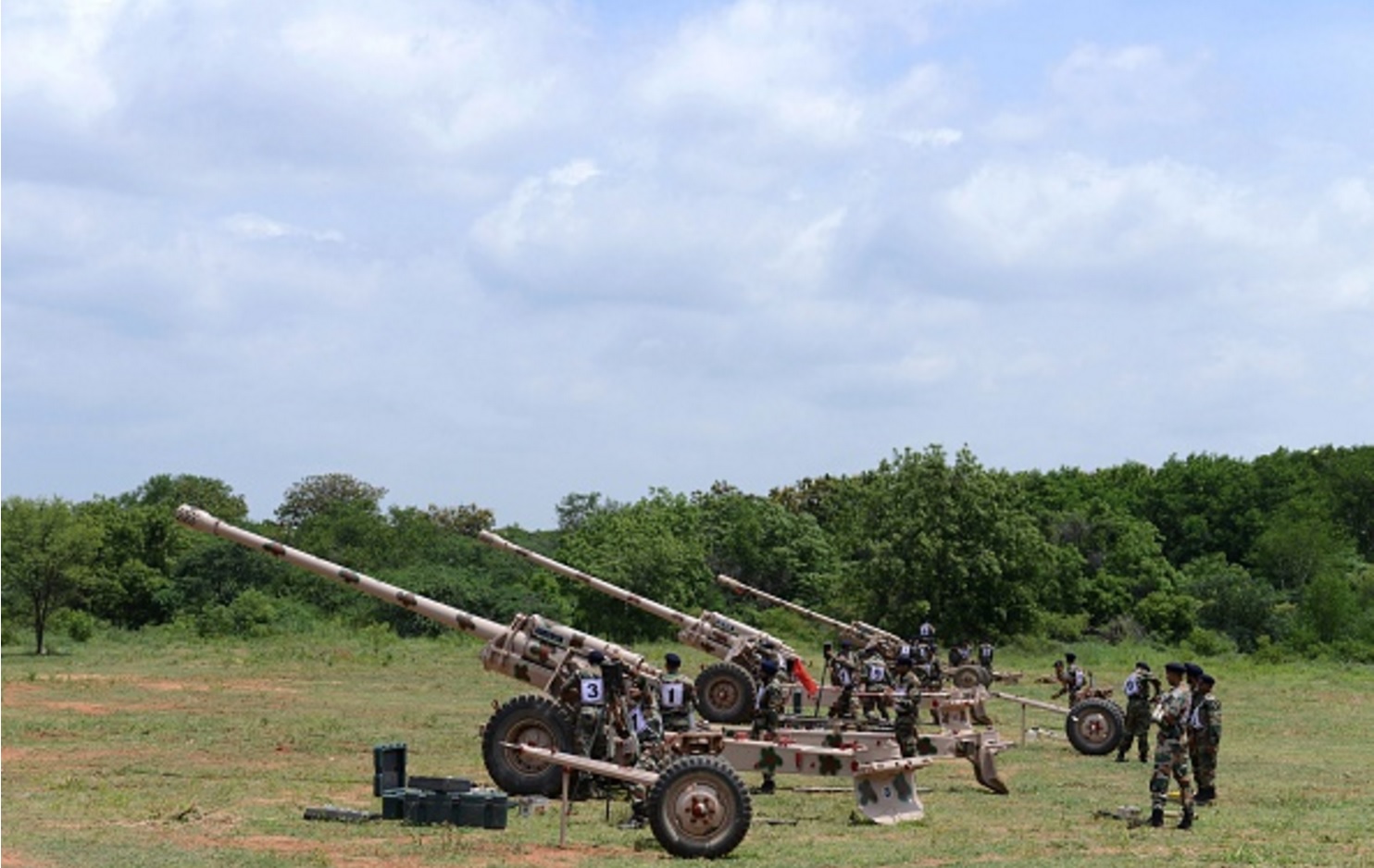
It is oft repeated that India and Russia share special and time-tested ties. In April 1947, even before it gained independence from colonial rule, India established diplomatic relations with the Soviet Union. Both states shared great camaraderie during the Cold War period, culminating in a Treaty of Peace, Friendship and Cooperation in 1971. Despite a drift during the tumultuous 1990s, India and the post-Soviet Russian Federation managed to maintain close ties due to a convergence of global and regional interests.
However, even though both countries remain close, realpolitik in recent times has induced them to pursue closer relations with each other’s geopolitical rivals. Russia has cultivated closer ties with China and Pakistan while India has strengthened relations with the United States. As a result, an inevitable drift between the two traditional partners is evident, though not strong enough for complete disengagement, given their amicable history and mutual interest in balancing China’s growth in Asia.
Russia announced its turn to the East in 2010. This shift, in essence, was focused towards China and gained further momentum following the Ukraine crisis in 2014. This had both a political and economic angle. Politically, Russia has appreciated Chinese support, or at least passive acquiescence, to its positions in Ukraine and even Syria, as evidenced by China’s support of a Russian veto against the Assad regime in Syria last month. Economically, China is now Russia’s largest trading partner, and the two have signed a 30-year agreement worth $400 billion (USD) under which Russia will supply China with 38 billion cubic meters of gas annually. The eastern route of the Siberian pipeline is already under construction and is expected to be operational by 2018.
Commercial and strategic interests explain Russia’s interest in South Asia, including its entente with Pakistan. Pakistan is an important country for Russia especially when the former’s economy is facing a crisis because of the dual impact of low oil prices and Ukraine-related sanctions. Owing to its geographical location, Pakistan is strategically important for Russia. The country is close to Central Asia, China and West Asia, making Pakistan crucial for Russia to gain a foothold in Asia.
Russia and Pakistan have taken concrete actions to cement their warming relations. Russia removed its arms embargo against Islamabad in 2014 and made a deal to sell Pakistan four Mi-35M helicopters the following year. Russia also invited Islamabad to join the Shanghai Cooperation Organization (SCO), even as it simultaneously pushed for Indian membership in the organization. In 2016, both countries performed joint military exercises despite India’s concerns following the Uri attack. Recently, Russia has also reportedly shown interest in the China-Pakistan Economic Corridor (CPEC), which links western China with the Gwadar port in Pakistan.

While Russia’s overall engagement with Pakistan is less than with India, it is evident that Russia has shifted away from defining its relations with Pakistan based upon its relations with India. The skepticism in New Delhi increased particularly after Russia decided to go ahead with its first joint military exercises with Pakistan, not long after the Uri episode. In addition, Russia, China, and Pakistan, in their trilateral meet in December last year to discuss developments in Afghanistan, left out both India and Afghanistan. Their “flexible approach” to lift sanctions against select Taliban leaders especially did not go down well with India since it is opposed to distinguishing between good and bad Taliban. While a six-party meet including the original three and India, Afghanistan, and Iran was held in February this year, Russia’s preference in dealing with Pakistan along with China has been all too visible. The evolving Russia-Pakistan relationship has thus raised concerns in New Delhi about the future course of Russia’s foreign policy.
While India is concerned with Russia’s closer relations with China and Pakistan, Russia appears to be equally concerned with India’s closer relationship with the United States. Creating competition for Russia, the United States has emerged as a major supplier to India, especially after the nuclear rapprochement. Defense trade between India and the United States has gone up to $15 billion, and India has been given the status of a major defense partner of the United States, which would likely enable it to purchase more high-end and sensitive American technologies.
The two sides also signed the Logistics Exchange Memorandum of Agreement (LEMOA), which will strengthen military ties between India and the United States by allowing each country to access each other’s military facilities for fueling and other logistical functions. More than anything, the agreement carries symbolic value. Though India practices strategic autonomy, the agreement is reflective of a greater synergy between the two in developing their strategic partnership. This has inevitably unsettled Russia, India’s traditional defense partner. Being that it has played a central role in South Asia for decades, Moscow naturally feels more inclined to pursue closer relations with Pakistan in order to remind India of its presence.
Finally, it is interesting to note that although political relations between India and Russia remain strong, the economic relationship is weak. Because India is energy-deficient and Russia has an energy surplus, the two have a mutual interest in energy trade. However, despite this evident compatibility, Indo-Russian trade and economic linkages remain minimal. Although the two states aimed to achieve $20 billion in trade by 2015, bilateral trade only totaled $7.83 billion in 2015. Russia comprised just one percent of India’s total trade, while India made up only 1.2 percent of Russia’s overall trade in 2015-2016. As mentioned before, the defense relationship has seen a decline as well, with India diversifying its arms imports from new suppliers like the United States, although Russia still remains India’s largest supplier.
In sum, realpolitik dominates India-Russia relations despite their mutual foreign policy priorities and cooperation in regional organizations like BRICS (Brazil, Russia, India, China, and South Africa) and the Shanghai Cooperation Organization (SCO). Russia has pursued deeper ties with China and Pakistan while India has bolstered ties with the United States. It will be important to observe how these moves will affect relations between the two in the coming decades. The economic sphere is a region where Russia and India can possibly strengthen their ties. Although political relations between the two countries currently seem to outweigh the minimal economic relationship, future expansion of the relationship between the two countries may depend on figuring out how to increase economic cooperation in this age of global connectivity.
Editor’s note: Editor’s note: In recent times, Russia has reached out to the Afghan Taliban, conducted its first ever military exercise with Pakistan, and drifted away from its traditional partner in the region, India. Our four-part series examines the significance of these events and whether they constitute a shift in Russia’s South Asia policy. This is part 3. Read the entire series here.
***
Image 1: Flickr, Narendra Modi (cropped)
Image 2: Indian Army demonstrating Russian field guns, Getty Images/Noah Seelam/AFP


